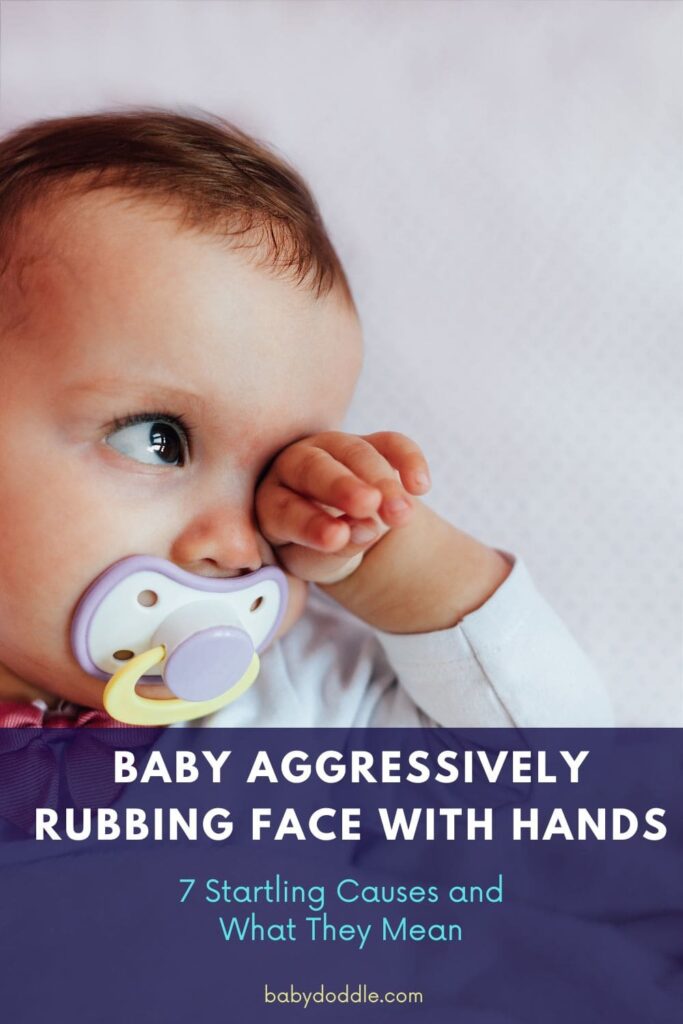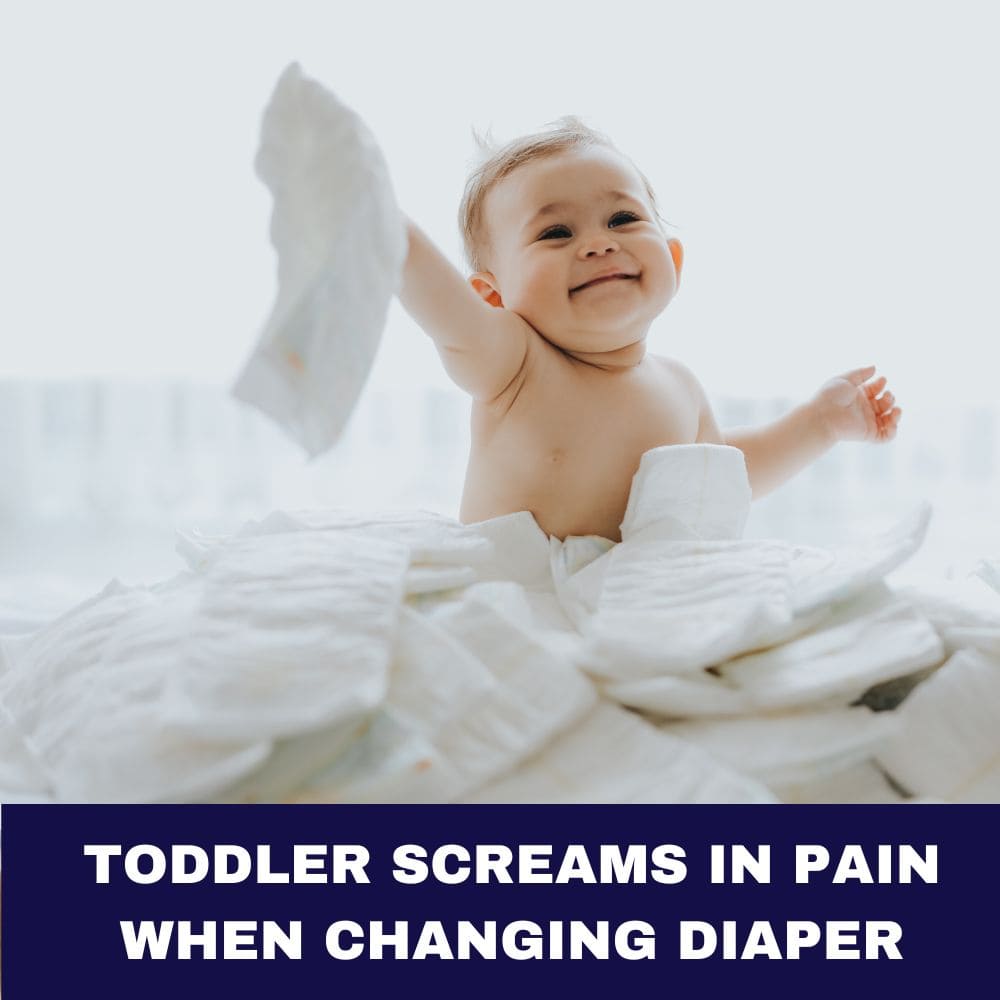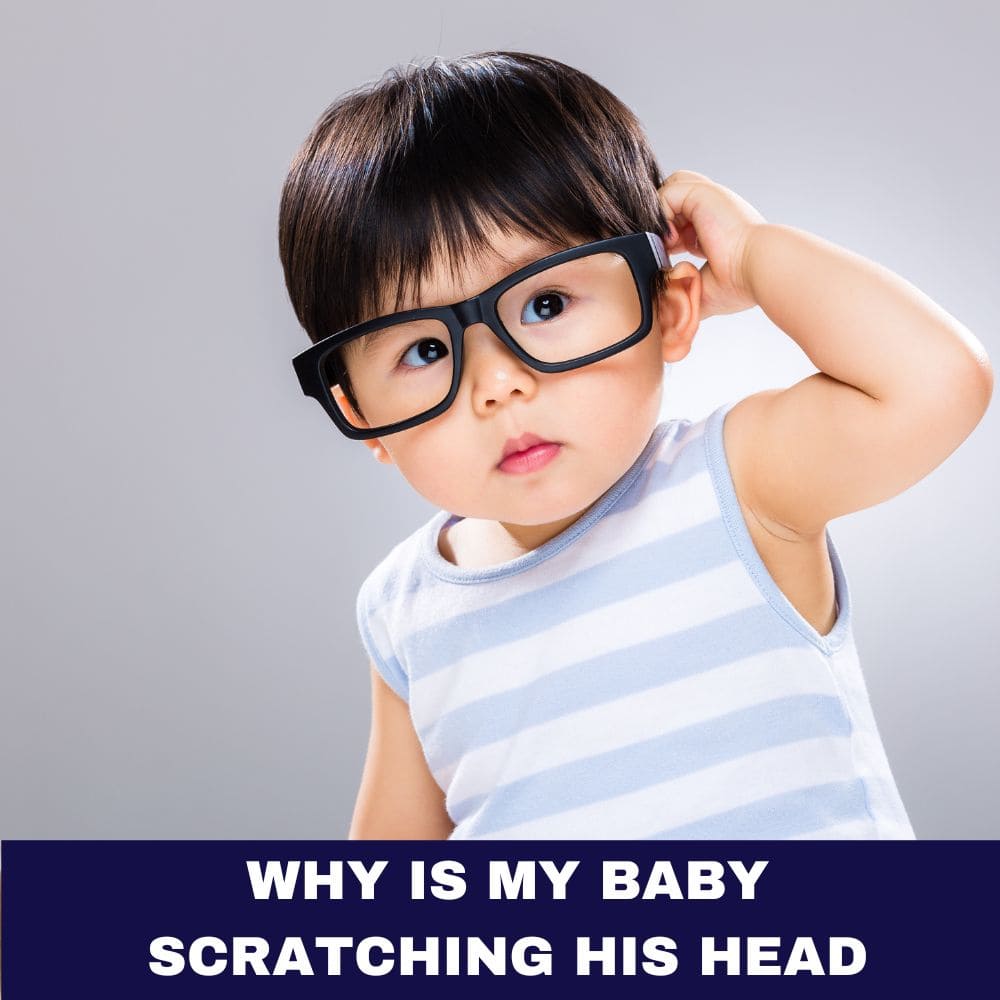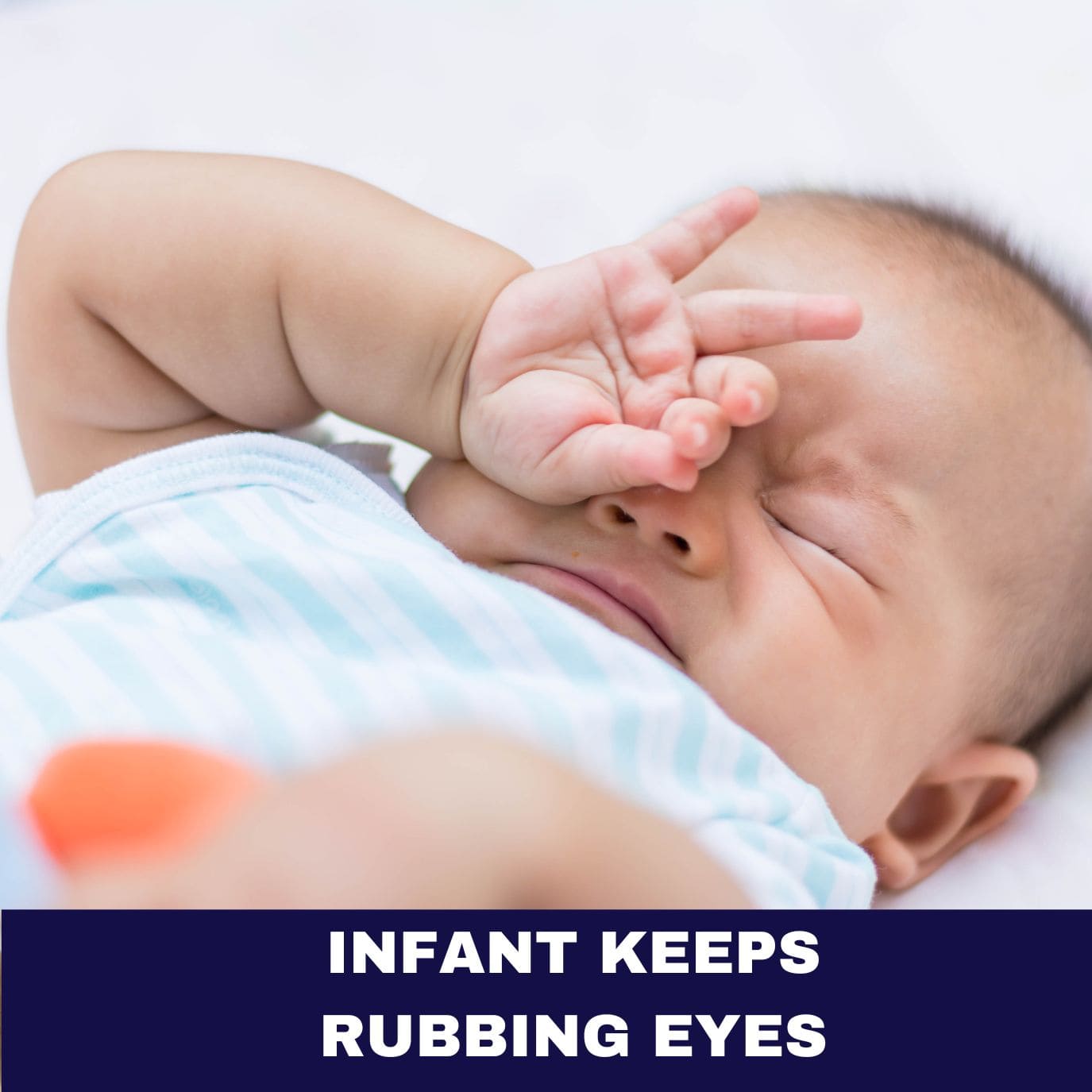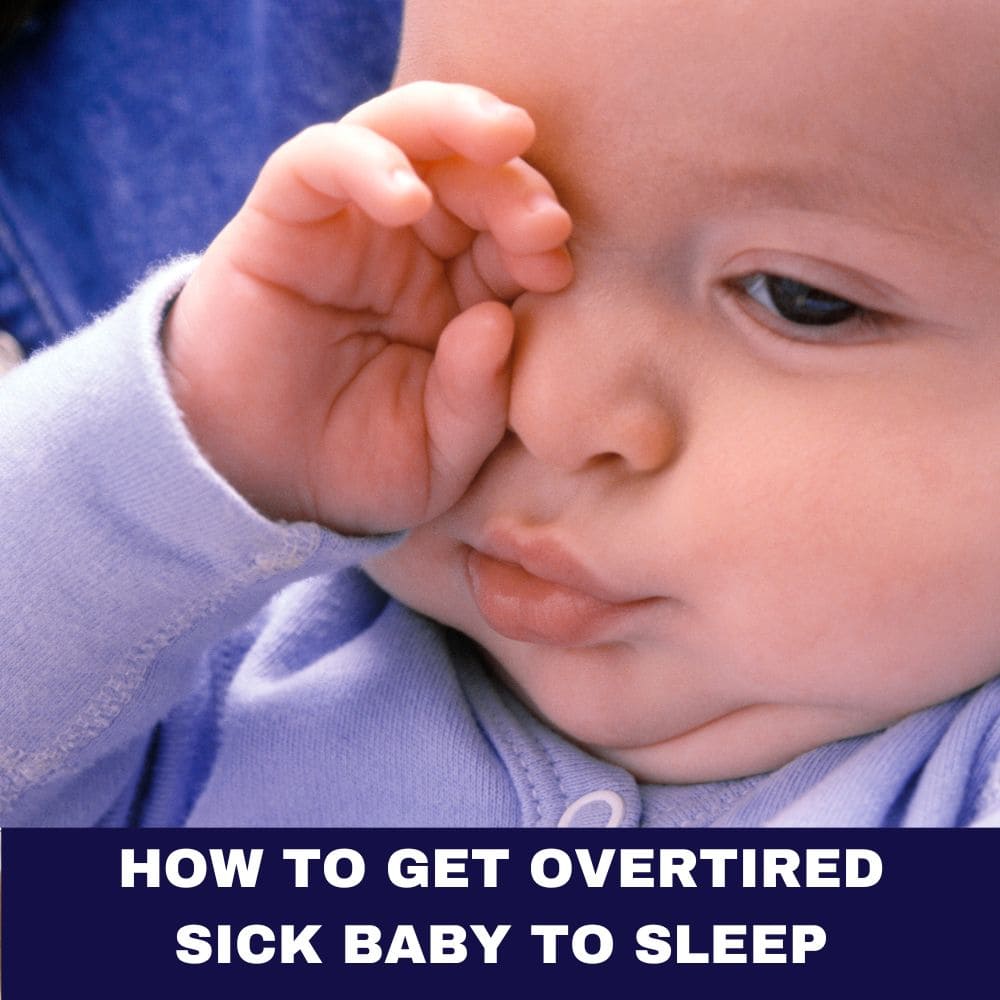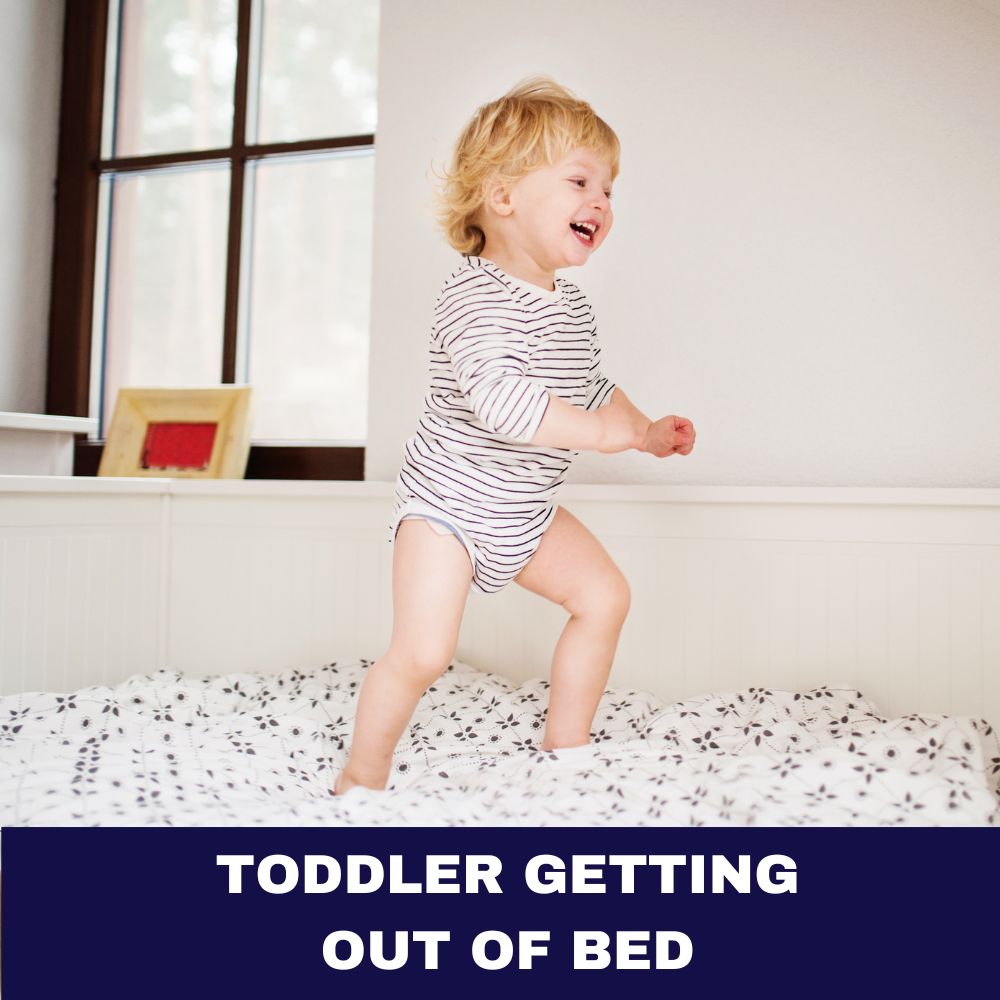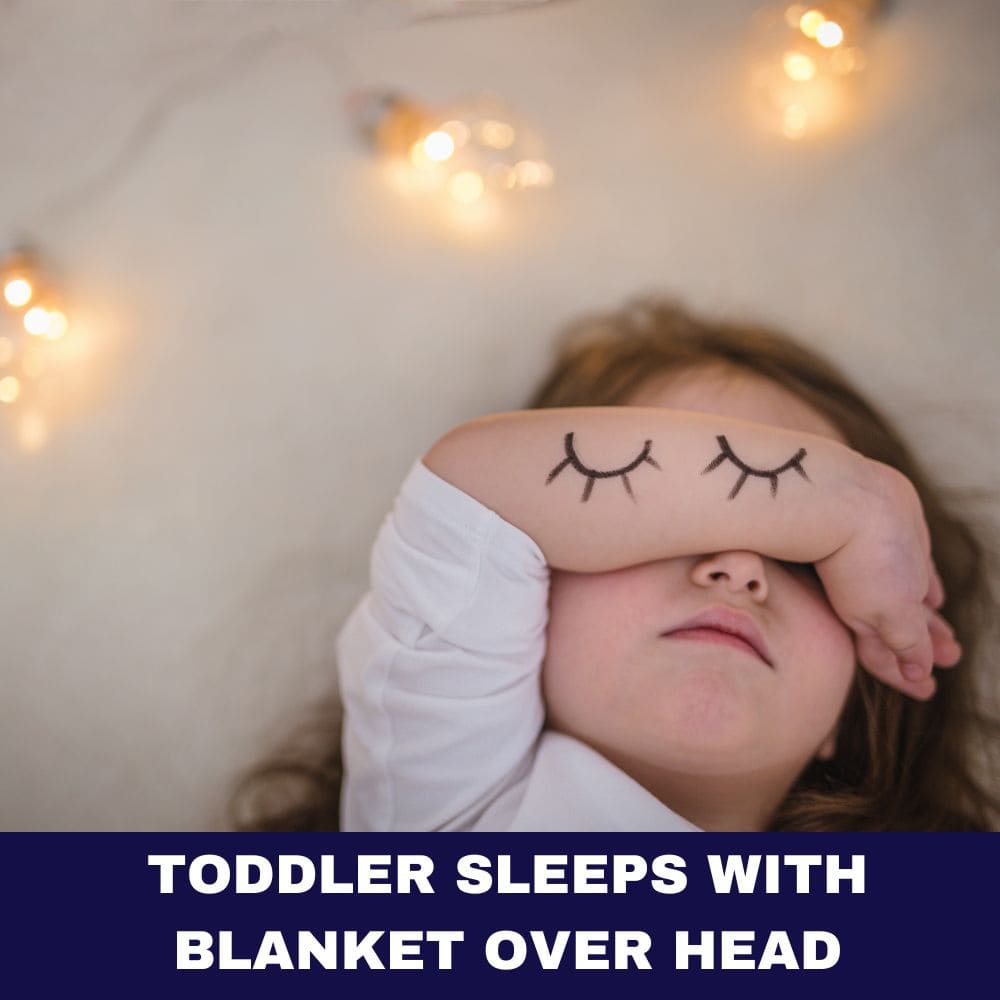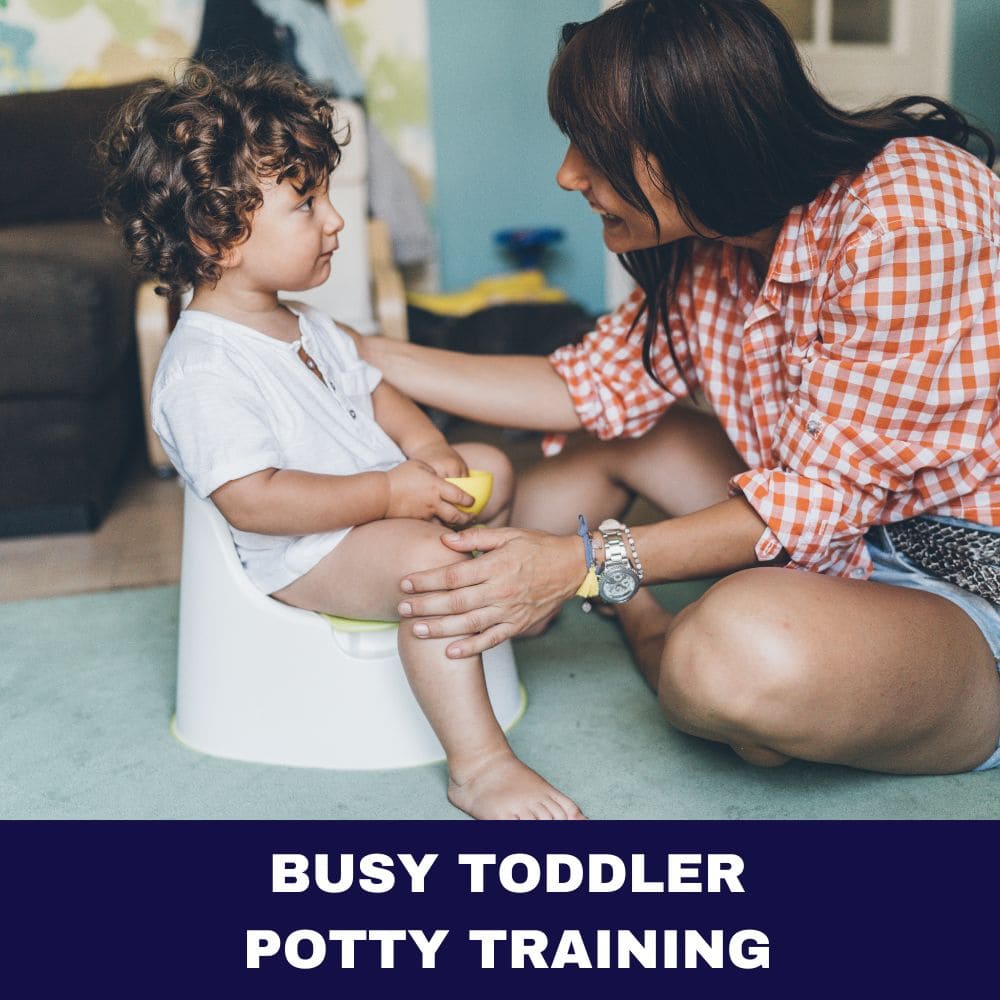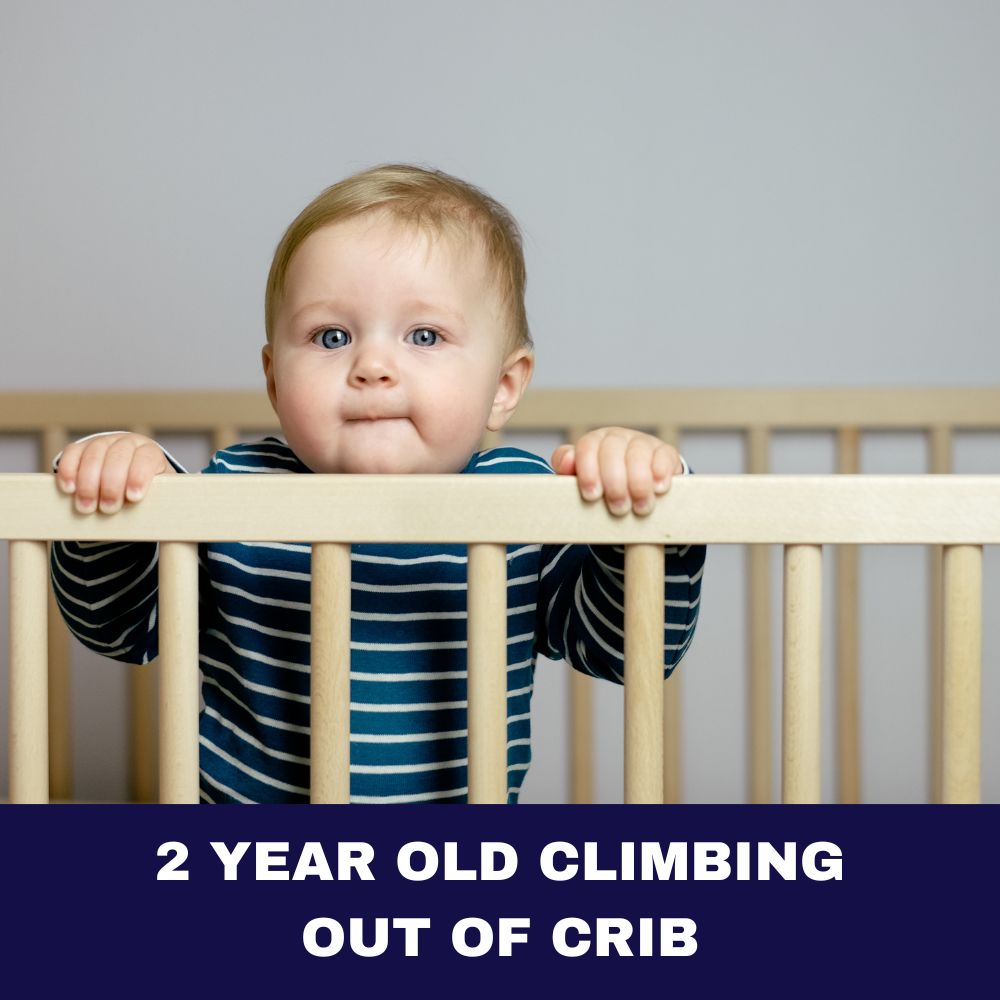You’ve just settled down for a peaceful evening with your little one when suddenly, they start aggressively rubbing their face with their hands. It’s a sight that can be both concerning and perplexing for any parent. While face rubbing is a common behavior in babies, the aggressive nature of it can leave you wondering, “What’s going on with my baby?”
Fear not, dear parent. This phenomenon, although startling, is often a way for your little one to communicate their needs or discomforts. In this comprehensive guide, we’ll unravel the seven most common causes of aggressive face rubbing in babies and what they might mean. Get ready to unlock the secret language of your baby’s gestures and gain valuable insights into their world.

Understanding Baby Face Rubbing Behavior
Face rubbing is a natural and instinctive behavior for babies. It’s their way of exploring their environment, self-soothing, or expressing discomfort. While it may seem concerning at first, it’s essential to understand that this behavior is perfectly normal and, in most cases, harmless.
However, when face rubbing becomes aggressive or excessive, it could be a sign that your baby is trying to communicate something specific. Paying close attention to the context and patterns of this behavior can provide valuable clues about what’s going on with your little one.
Understanding Baby’s Non-Verbal Cues
Babies communicate primarily through non-verbal cues, and face rubbing is one of the most common ways they express themselves. As parents, it’s crucial to become attuned to these cues and learn to interpret their meanings accurately. By observing your baby’s facial expressions, body movements, and vocalizations in conjunction with the face rubbing behavior, you can gain valuable insights into their needs and discomforts.
Facial expressions: Pay attention to whether your baby’s face appears relaxed or tense, their brow is furrowed, or their eyes are squinting, as these can indicate different types of discomfort or emotions.
Body movements: Notice if your baby is arching their back, kicking their legs, or moving their arms in a particular way, as these movements can provide additional context to the face-rubbing behavior.
Vocalizations: Listen for any accompanying sounds, such as grunts, whimpers, or cries, which can further clarify the meaning behind the face rubbing.
By becoming an expert in reading your baby’s non-verbal cues, you’ll be better equipped to address their needs promptly and effectively, fostering a deeper connection and understanding with your little one.
Cause 1 – Teething Discomfort
Ah, the joys of teething! As new teeth begin to emerge, your baby’s gums can become swollen, tender, and downright uncomfortable. It’s no wonder they might resort to aggressively rubbing their face in an attempt to alleviate the discomfort.
Signs of teething discomfort:
- Excessive drooling
- Irritability and fussiness
- Chewing on everything in sight
- Rash or redness around the mouth
Next steps: If you suspect teething is the culprit behind your baby’s face rubbing, try offering cold teething rings or gently massaging their gums with a clean finger. Over-the-counter pain relievers (with your pediatrician’s approval) can also help manage discomfort.
| Signs of Teething Discomfort | Signs of Skin Irritation | Signs of Eye Discomfort | Signs of Ear Infection |
|---|---|---|---|
| Excessive drooling | Rash or redness around mouth | Excessive eye rubbing | Tugging or pulling at the ear |
| Irritability and fussiness | Dry, flaky skin | Redness or discharge | Fever |
| Chewing on everything | Itchiness or scratching | Sensitivity to light | Difficulty sleeping |
| Swollen, tender gums | Rashes or hives | Squinting | Fussiness or irritability |
Cause 2 – Skin Irritations or Allergies
A baby’s skin is delicate and sensitive, making it prone to irritations and allergies. From drool rash to food allergies, many factors can cause your little one’s skin to become itchy or irritated, leading to aggressive face rubbing.
Common skin irritants and allergens:
- Saliva or drool
- Food allergens (dairy, soy, etc.)
- Laundry detergents or fabric softeners
- Skincare products or soaps
Next steps: If you suspect a skin irritation or allergy, try identifying and eliminating potential triggers. Use fragrance-free, hypoallergenic products, and consult with your pediatrician if the issue persists. Keeping your baby’s skin clean and moisturized can also help alleviate discomfort.
Cause 3 – Eye Discomfort or Vision Issues
Eyes are another potential source of discomfort for babies, which can lead to face rubbing. Blocked tear ducts, eye infections, or even vision problems can cause your little one to rub their eyes and face aggressively.
Signs of eye discomfort:
- Excessive eye rubbing or squinting
- Redness or discharge around the eyes
- Sensitivity to light
- Difficulty focusing or tracking objects
Next steps: If you notice any of these signs, it’s crucial to consult with your pediatrician or an eye specialist. They can properly diagnose and treat any underlying eye conditions, ensuring your baby’s comfort and visual development.
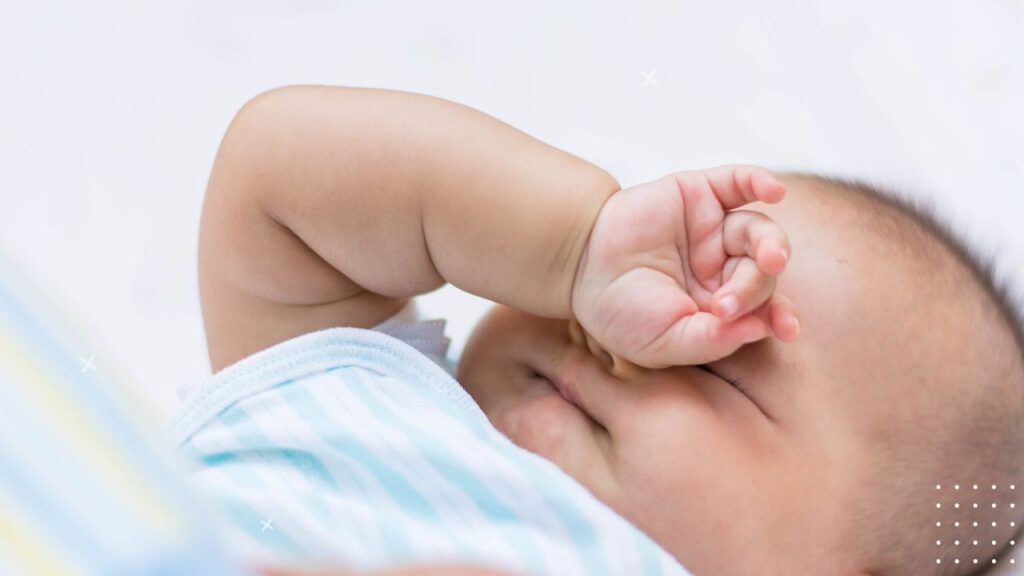
Cause 4 – Ear Infections
Ear infections can be incredibly painful for babies, and they often don’t have the verbal skills to communicate their discomfort. As a result, they may resort to aggressive face rubbing, particularly around the ear area.
Signs of an ear infection:
- Tugging or pulling at the ear
- Fever
- Difficulty sleeping
- Fussiness or irritability
Next steps: If you suspect an ear infection, it’s essential to seek medical attention promptly. Your pediatrician can prescribe appropriate antibiotics or other treatments to alleviate the pain and prevent further complications.
Cause 5 – Sensory Stimulation and Self-Soothing
Babies are constantly exploring their world through their senses, and face rubbing can be a way for them to seek sensory input or self-soothe. This behavior is often harmless and can even be soothing for your little one.
Examples of sensory stimulation:
- Feeling the texture of their skin
- Exploring the contours of their face
- Experiencing the warmth or coolness of their hands
Next steps: If your baby’s face rubbing seems to be a self-soothing behavior, you can try providing appropriate alternatives, such as soft toys or blankets, to satisfy their sensory needs. However, if the behavior becomes excessive or interferes with their daily routine, it’s best to consult with your pediatrician.
The Role of Sensory Integration
Face rubbing can also be a manifestation of your baby’s sensory integration process. Sensory integration is the neurological process by which the brain organizes and interprets sensory information from various sources, such as touch, sight, sound, and movement. During this crucial developmental stage, babies often engage in repetitive behaviors, like face rubbing, to help their brains make sense of the overwhelming sensory input they experience.
By rubbing their faces, babies are exploring different textures, temperatures, and sensations, which helps them develop a better understanding of their bodies and their surroundings. This exploration is an essential part of their cognitive and motor skill development.
However, if your baby seems overwhelmed or overstimulated by sensory input, face rubbing may be their way of seeking comfort or self-regulation. In such cases, providing a calming environment with minimal sensory distractions can help them feel more at ease.
Next steps: Observe your baby’s behavior and reactions during face rubbing episodes to determine if it’s related to sensory integration. If you notice signs of overstimulation or distress, try reducing external stimuli or providing calming sensory input, such as gentle rocking or soft music.
Cause 6 – Hunger, Fatigue, or Developmental Milestones
Sometimes, face rubbing can be a sign that your baby is hungry, tired, or going through a developmental milestone. It’s their way of communicating their needs or expressing frustration.
Signs of hunger or fatigue:
- Rooting or sucking motions
- Yawning or rubbing eyes
- Fussiness or irritability
Developmental milestones:
- Teething
- Discovering new facial features
- Learning to control their movements
Next steps: If you suspect your baby’s face rubbing is related to hunger or fatigue, try feeding or napping them. If it seems connected to a developmental milestone, provide plenty of patience, encouragement, and appropriate toys or activities to support their growth.
The Impact of Temperament
Every baby is born with their unique temperament, which plays a significant role in their behaviors, including face rubbing. Some babies are naturally more intense or reactive, while others are more laid-back or adaptable. Understanding your baby’s temperament can help you better interpret and respond to their face rubbing behavior.
For example, a baby with a more intense temperament may exhibit aggressive face rubbing as a way to express their heightened emotions or frustrations. In contrast, a more adaptable baby may engage in face rubbing as a self-soothing mechanism or a way to explore their surroundings.
It’s important to note that no temperament is inherently better or worse; they are simply different ways of experiencing and responding to the world. By recognizing and respecting your baby’s temperament, you can tailor your approach to their unique needs and find more effective ways to support and comfort them.
Next steps: Observe your baby’s overall demeanor and patterns of behavior to better understand their temperament. This understanding can guide you in responding appropriately to their face rubbing episodes and providing the right kind of support and stimulation.
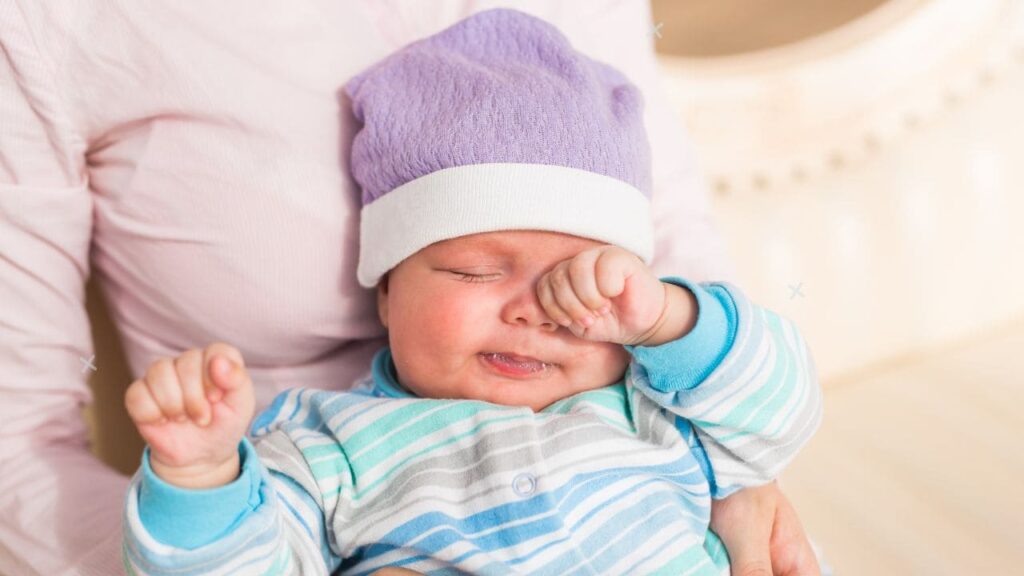
Cause 7 – Uncontrolled Movements or Neurological Conditions
In rare cases, aggressive face rubbing can be a symptom of an underlying neurological condition or uncontrolled movements. While it’s important not to panic, it’s crucial to be aware of these potential causes.
Neurological conditions to be aware of:
- Autism spectrum disorder
- Cerebral palsy
- Seizure disorders
Next steps: If you notice any other concerning symptoms or behaviors accompanying the face rubbing, such as developmental delays, abnormal movements, or lack of eye contact, it’s essential to consult with your pediatrician or a specialist for a proper evaluation.
Normal Baby Behaviors and Face Rubbing
While aggressive face rubbing can be a sign of discomfort or an underlying issue, it’s also important to recognize that it can be a normal, age-appropriate behavior for babies. As they explore their world and develop new skills, face rubbing may simply be a way for them to interact with their environment.
Examples of normal face rubbing behaviors:
- Exploring facial features
- Experimenting with touch and texture
- Self-soothing or comforting gestures
It’s essential to observe the context and frequency of the face rubbing to determine if it’s a normal behavior or if it warrants further attention.
| Age Range | Normal Face Rubbing Behaviors |
|---|---|
| 0-3 months | Exploring their own facial features, self-soothing |
| 4-6 months | Discovering textures and sensations, teething discomfort |
| 7-9 months | Expressing hunger, fatigue, or frustration |
| 10-12 months | Seeking sensory input, self-stimulation |
| 1-2 years | Communicating needs or emotions, self-comforting |
Managing and Alleviating Face Rubbing
Once you’ve identified the potential cause of your baby’s aggressive face rubbing, it’s time to take action to alleviate their discomfort and manage the behavior. Here are some practical tips and strategies:
- Teething relief:
- Offer cold teething rings or frozen washcloths for gnawing
- Gently massage their gums with a clean finger
- Use over-the-counter pain relievers (with pediatrician’s approval)
- Choosing baby-safe products:
- Opt for fragrance-free, hypoallergenic skincare products
- Use gentle, dermatologist-recommended laundry detergents
- Consult with your pediatrician for product recommendations
- Baby skin care:
- Keep your baby’s skin clean and moisturized
- Identify and eliminate potential irritants or allergens
- Consider using protective creams or ointments (with the pediatrician’s approval)
- Gentle redirection:
- Offer appropriate toys or blankets for sensory stimulation
- Distract with soothing activities, songs, or stories
- Provide patience and encouragement during developmental milestones
- Professional support:
- Consult with your pediatrician for persistent or concerning behaviors
- Seek specialized care for suspected neurological or developmental conditions
Remember, every baby is unique, and it may take some trial and error to find the right approach. Stay attuned to your little one’s cues, and don’t hesitate to seek professional guidance if needed.
| Do | Don’t |
|---|---|
| Trim baby’s nails regularly | Ignore persistent or excessive face rubbing |
| Use protective mittens or socks on hands | Scold or punish the behavior |
| Offer teething toys or cold compresses | Restrain the baby’s hands forcefully |
| Distract with age-appropriate activities | Use harsh or irritating products on baby’s skin |
| Consult a pediatrician for concerning behaviors | Dismiss signs of distress or discomfort |
Cultural and Traditional Perspectives
While face rubbing is a universal behavior among babies, different cultures and traditions may have varying perspectives and practices surrounding this phenomenon. In some communities, face rubbing may be viewed as a positive sign or have symbolic meanings, while in others, it may be discouraged or seen as a concerning behavior.
For example, in certain Asian cultures, face rubbing is believed to be a way for babies to stimulate their facial muscles and promote healthy development. In contrast, some Western cultures may perceive aggressive face rubbing as a potential sign of distress or discomfort.
It’s important to be respectful and open-minded when exploring different cultural perspectives on face rubbing. By engaging in respectful dialogue with family members, community elders, or healthcare professionals from diverse backgrounds, you can gain valuable insights and integrate traditional wisdom with modern medical knowledge.
Next steps: If you or your family have cultural or traditional beliefs surrounding face rubbing, seek guidance from trusted sources within your community. Open communication and a willingness to learn can help you find a balanced approach that respects your values while ensuring your baby’s well-being.
Environmental Factors and Face Rubbing
Environmental factors can also play a role in triggering or exacerbating face rubbing behavior in babies. By being mindful of these factors, you can create a more comfortable and supportive environment for your little one.
Temperature and humidity: Extreme temperatures or humidity levels can cause discomfort and irritation, leading babies to rub their faces for relief. Maintaining a comfortable and well-ventilated environment can help mitigate this issue.
Air quality: Poor air quality, whether from pollutants, smoke, or allergens, can irritate a baby’s sensitive respiratory system and skin, potentially leading to face rubbing.
Noise levels: Excessive noise or sudden loud sounds can be startling and overwhelming for babies, causing them to rub their faces as a self-soothing mechanism or in response to the sensory input.
Lighting conditions: Bright or flickering lights can strain a baby’s developing eyes, prompting them to rub their faces in an attempt to alleviate the discomfort.
By being aware of these environmental factors and making adjustments as needed, you can create a more comfortable and supportive environment for your baby, potentially reducing the need for excessive face rubbing.
Next steps: Regularly assess your baby’s environment and make necessary changes, such as adjusting the temperature, improving air quality, or minimizing noise and light disturbances. Consult with your healthcare provider if you
| Environmental Factor | Potential Impact |
|---|---|
| High temperature or humidity | Skin irritation, discomfort |
| Poor air quality (pollutants, smoke) | Respiratory irritation, skin irritation |
| Excessive noise levels | Sensory overload, startling |
| Bright or flickering lights | Eye strain, discomfort |
| Rough or scratchy fabrics | Skin irritation, itchiness |
When to Consult Your Pediatrician
While face rubbing is often harmless, there are certain situations where it’s crucial to consult with your pediatrician or healthcare professional:
- Signs of distress or pain:
- Excessive crying or fussiness
- Inconsolable behavior
- Fever or other concerning symptoms
- Persistent or worsening behavior:
- Face rubbing that becomes excessive or interferes with daily activities
- Behavior that does not improve despite efforts to alleviate discomfort
- Developmental concerns:
- Delays in reaching developmental milestones
- Lack of eye contact or responsiveness
- Abnormal movements or behaviors
Your pediatrician can perform a thorough examination, rule out any underlying medical conditions, and provide personalized guidance and treatment options if needed.
Conclusion
Aggressive face rubbing in babies can be a perplexing and concerning behavior for parents, but understanding the potential causes can help alleviate stress and provide valuable insights into your little one’s needs.
From teething discomfort to skin irritations, ear infections, and even sensory exploration, this comprehensive guide has explored the seven most common causes of aggressive face rubbing and what they might mean.
While face rubbing is often a harmless behavior, it’s essential to remain vigilant and seek professional guidance if the behavior persists or is accompanied by other concerning symptoms. Remember, your baby’s comfort and well-being should always be the top priority.
With patience, understanding, and the right strategies, you can effectively manage and alleviate your baby’s face rubbing while fostering a nurturing and supportive environment for their growth and development.
So, the next time your little one starts aggressively rubbing their face, take a deep breath and refer back to this guide. You’ve got this, amazing parent!
FAQ – Baby Aggressively Rubbing Face with Hands
Is it normal for my baby to rub their face aggressively?
While it can be concerning, aggressive face rubbing is a common behavior in babies, often used to communicate discomfort or explore their environment. However, it’s essential to observe the context and frequency to determine if it’s a normal behavior or if it warrants further attention.
Can aggressive face rubbing cause skin irritation or damage?
In most cases, face rubbing is unlikely to cause significant skin irritation or damage. However, if the behavior becomes excessive or your baby has long nails, it may lead to scratches or skin irritation. Keeping nails trimmed and using protective mittens can help prevent this.
My baby seems to rub their face more at certain times of the day. Is this normal?
Yes, it’s common for babies to exhibit certain behaviors more frequently at specific times of the day. For example, face rubbing may increase when they’re tired, hungry, or experiencing discomfort, such as during teething episodes.
Is face rubbing a sign of autism or other developmental delays?
While aggressive face rubbing can be a symptom of certain neurological or developmental conditions, it is not a definitive sign of autism or developmental delays. If you have concerns, consult with your pediatrician for a proper evaluation.
Should I be concerned if my baby’s face rubbing is accompanied by other unusual behaviors?
If you notice other concerning behaviors or symptoms accompanying the face rubbing, such as abnormal movements, lack of responsiveness, or developmental delays, it’s essential to consult with your pediatrician promptly for a thorough evaluation.
Remember, every baby is unique, and open communication with your healthcare provider is crucial for addressing any concerns or questions you may have.
